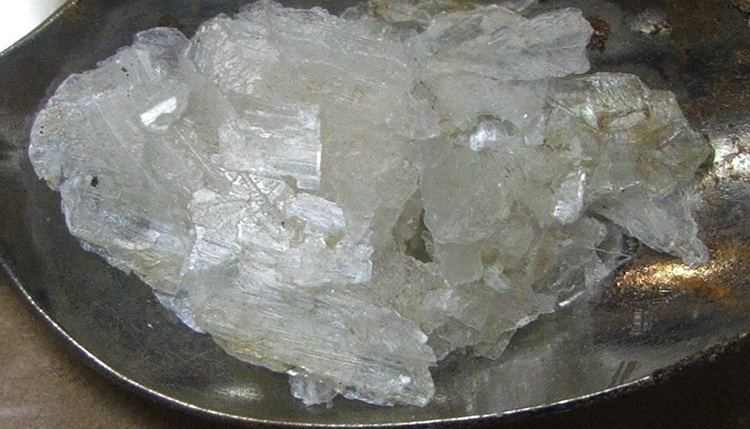Formula C4H6O4Zn Density 1.74 g/cm³ | Molar mass 183.48 g/mol Appearance White solid (all forms) | |
 | ||
Related compounds | ||
Zinc acetate
Zinc acetate is a salt with the formula Zn(O2CCH3)2, which commonly occurs as the dihydrate Zn(O2CCH3)2(H2O)2. Both the hydrate and the anhydrous forms are colorless solids that are commonly used in chemical synthesis and as dietary supplements. Zinc acetates are prepared by the action of acetic acid on zinc carbonate or zinc metal. When used as a food additive, it has the E number E650.
Contents
- Zinc acetate
- Making zinc acetate
- Basic properties and structures
- Basic zinc acetate
- Dietary and medicinal applications
- Industrial applications
- References
Making zinc acetate
Basic properties and structures
In anhydrous zinc acetate the zinc is coordinated to four oxygen atoms to give a tetrahedral environment, these tetrahedral polyhedra are then interconnected by acetate ligands to give a range of polymeric structures. In contrast, most metal diacetates feature metals in octahedral coordination with bidentate acetate groups.
In zinc acetate dihydrate the zinc is octahedral, wherein both acetate groups are bidentate.
Basic zinc acetate
Heating Zn(CH3CO2)2 in a vacuum results in a loss of acetic anhydride, leaving a residue of basic zinc acetate, with the formula Zn4O(CH3CO2)6. This cluster compound has the tetrahedral structure shown below. This species closely resembles the corresponding beryllium compound, although it is slightly expanded with Zn-O distances ~1.97 vs ~1.63 Å for Be4O(OAc)6.
Dietary and medicinal applications
Zinc acetate has been used in lozenges for treating the common cold. Pooling the results of three high dose zinc acetate trials indicates an average 42% reduction in the duration of colds (see figure).
Zinc acetate is a particularly useful salt in lozenges since acetate has relatively low affinity for zinc, with the result that essentially all zinc from the lozenges is freely released upon solvation in the saliva.
Although zinc acetate lozenges appear to be able to shorten the duration of colds, some zinc lozenges may be more effective than others. Among the factors affecting the usefulness of a zinc lozenge are the total dose of zinc provided as well as the presence of substances like citric acid which may bind up much of the zinc that the lozenge is providing.
Zinc acetate can also be used to treat zinc deficiencies. As an oral daily supplement it is used to inhibit the body's absorption of copper as part of the treatment for Wilson's disease. Zinc acetate is also sold as an astringent in the form of an ointment, a topical lotion, or combined with an antibiotic such as erythromycin for the topical treatment of acne. It is commonly sold as a topical anti-itch ointment.
In chewing gum, zinc acetate is a breath freshener and, when combined with hexetidine, a plaque inhibitor.
Industrial applications
Industrial applications include wood preservation, manufacturing other zinc salts, polymers, manufacture of ethylene acetate, as a dye mordant, and analytical reagent. It is used in commercial nuclear power plants as a plating inhibitor on primary water piping.
